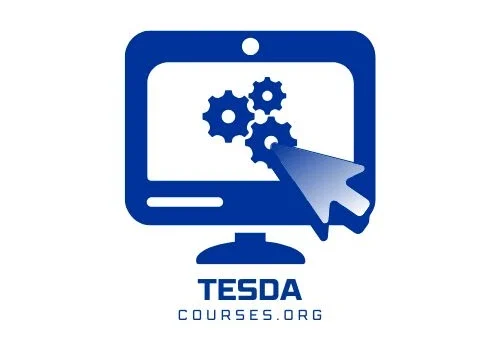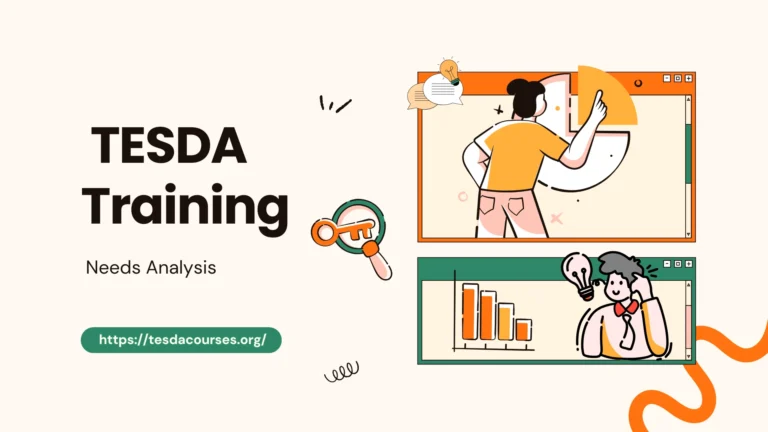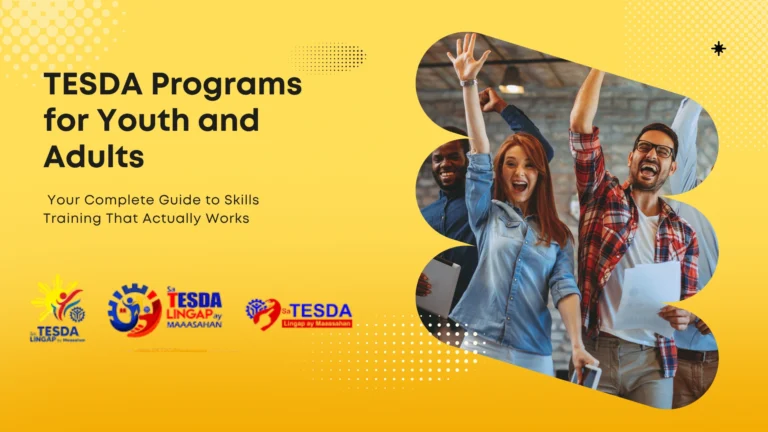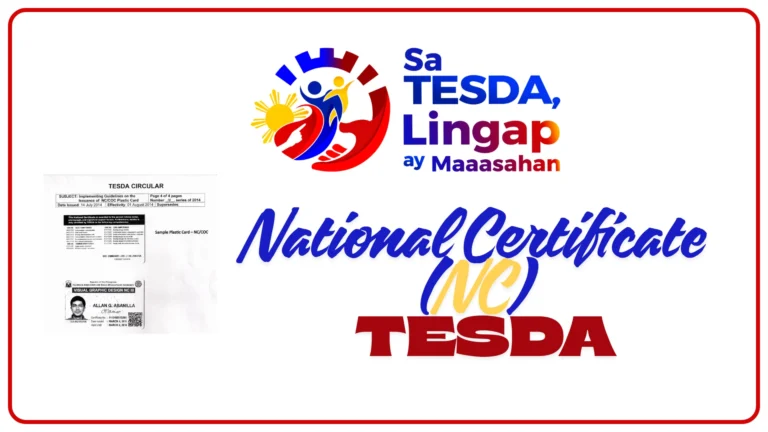The Complete Guide to TESDA Training Institutions in the Philippines: Your Gateway to Skills and Success
Look, I’m going to be straight with you: navigating the world of vocational training in the Philippines can feel like trying to find your way through Manila traffic during rush hour. Overwhelming? Absolutely. But here’s the thing—TESDA training institutions might just be your golden ticket to a career that actually pays the bills and keeps you excited about Monday mornings.
Whether you’re an international student eyeing the Philippines as your next educational adventure, or you’re simply curious about what TESDA (that’s the Technical Education and Skills Development Authority, by the way) has to offer, you’ve landed in the right place. I’ve spent considerable time digging into this world, and I’m here to break it all down for you—no bureaucratic jargon, no confusing acronyms, just straight talk about one of Southeast Asia’s most accessible pathways to professional skills.
What Exactly Are TESDA Training Institutions?
Let me paint you a picture. Imagine a network of schools, centers, and institutes spread across 7,641 islands (yes, that’s how many the Philippines has), all dedicated to one mission: turning people into skilled professionals. That’s essentially what TESDA training institutions are.
These aren’t your typical universities with ivory towers and philosophy lectures. We’re talking about practical, hands-on training centers where you learn actual skills—welding, cooking, nursing assistance, maritime operations, IT programming, and about a hundred other trades that companies are actively hiring for.
Think of TESDA as the Philippines’ answer to the skills gap. While everyone was busy chasing four-year degrees, TESDA quietly built an empire of accredited training centers that produce job-ready graduates in months, not years. Pretty clever, right?
TESDA Courses for Abroad: The Ultimate Guide to In-Demand NC II & NC III Certifications
Why Should You Care About TESDA Accredited Training Centers?
Here’s where it gets interesting. Not all training centers are created equal, and that’s where accreditation becomes your best friend.
TESDA accredited training centers have jumped through some serious hoops to earn that stamp of approval. We’re talking about:
- Quality-assured programs that meet national standards
- Industry-recognized certifications that employers actually respect
- Qualified instructors who know their craft inside out
- Proper facilities and equipment (no learning welding with a broken torch)
- Updated curricula that match current industry needs
I’ll be honest with you—I’ve seen plenty of fly-by-night “training centers” that promise the moon and deliver disappointment. Going with a TESDA-accredited institution is like buying insurance for your educational investment. You know you’re getting the real deal.
The Ultimate List: Types of TESDA Training Institutions You Should Know
Let’s break down the landscape because not all TESDA institutions are the same beast:
1. TESDA Technology Institutions (TTIs)
These are TESDA’s own training centers—government-run facilities scattered across the country. Think of them as the flagship stores of vocational education. They typically offer lower fees (sometimes even free training) and maintain high standards because, well, they’re run by TESDA itself.
2. Private TESDA Accredited Schools
These are privately owned but TESDA-certified institutions. They range from small community training centers to large technical colleges. The quality varies, but accreditation ensures a baseline standard. Many offer more flexible schedules and specialized programs.
3. TESDA Maritime Training Institutions
If you’ve ever dreamed of seeing the world while earning serious money, maritime training is where it’s at. The Philippines is one of the world’s largest suppliers of seafarers, and these specialized institutions train future captains, engineers, and crew members. TESDA maritime training institutions offer courses in everything from basic safety training to advanced navigation.
4. TESDA Vocational Schools
These focus on traditional trades—carpentry, plumbing, automotive, beauty care, and culinary arts. They’re the backbone of the system and produce thousands of skilled workers annually.
5. Technical-Vocational Schools with Higher Education
Some institutions offer both TESDA programs and degree courses. They’re perfect if you want to keep your options open—start with a short course, see if you like it, then maybe pursue a degree later.
How to Find TESDA Training Institutions Near You
Alright, let’s get practical. You’re sold on the idea, but now you need to find a TESDA training institution near you. Here’s my foolproof method:
Step 1: Hit Up the Official TESDA Website
Start at the source. The TESDA website (www.tesda.gov.ph) has a searchable database of all accredited institutions. It’s not the prettiest website you’ll ever use, but it’s comprehensive.
Step 2: Use the TESDA Mobile App
Yes, they have an app. It’s called “TESDA Online” and it’s surprisingly useful. You can search for nearby training centers, check course offerings, and even verify if a school is actually accredited.
Step 3: Google Maps Is Your Friend
Search “TESDA training institution near me” or “TESDA accredited schools near me” on Google Maps. You’ll get locations, contact info, and even reviews from past students. Real talk from real people—that’s gold.
Step 4: Visit Provincial TESDA Offices
Every province has a TESDA office. Drop by, talk to the staff, get brochures. Sometimes the old-school approach yields the best results, plus you can ask specific questions.
Step 5: Social Media Stalking (The Good Kind)
Check Facebook groups and pages. Many TESDA training schools maintain active social media presence. You’ll see photos of facilities, student testimonials, and upcoming enrollment schedules.
TESDA Training Institutions by Major Cities
Let me save you some time with a regional breakdown:
TESDA Training Institutions in Manila
Manila and the surrounding Metro Manila area have the highest concentration of training centers. You’ll find everything from maritime academies in Tondo to culinary schools in Makati. The advantage? More options, better facilities, and proximity to potential employers.
Popular Manila institutions include:
- TESDA Women’s Center (Taguig)
- STI College branches (multiple locations)
- Philippine-Japan Youth Filipino Association
- Asian Institute of Maritime Studies
TESDA Training Institutions in Cebu
Cebu is the Queen City of the South, and its training institutions reflect that energy. Strong focus on IT, BPO-related courses, tourism, and hospitality. The business process outsourcing boom has made Cebu a hotspot for skills training.
Notable Cebu centers:
- TESDA Provincial Office Training Center
- AMA Computer Learning Center
- Cebu Technological University
- Don Bosco Technology Center
TESDA Training Centers in Davao
Davao represents Mindanao’s economic powerhouse. Training here often focuses on agriculture technology, food processing, and construction trades. It’s also becoming a tech hub, so IT courses are growing rapidly.
Key Davao institutions:
- TESDA Regional Training Center XI
- Davao Oriental State College of Science and Technology
- Holy Cross of Davao College
The Ultimate Guide to TESDA Training Centers, Courses, and Contact Information Nationwide
The Real Deal: TESDA Training Institution Courses
Now we’re getting to the meat of it. What can you actually study? The courses offered by TESDA training institutions are surprisingly diverse. I’m talking over 300 different programs across various sectors.
Top In-Demand Courses for 2025
| Sector | Popular Courses | Duration | Employment Prospects |
|---|---|---|---|
| Information Technology | Computer Systems Servicing, Web Development, Animation | 3-6 months | Excellent—especially remote work |
| Healthcare | Caregiving, Massage Therapy, First Aid | 2-6 months | Very High—global demand |
| Maritime | Basic Safety Training, Marine Engineering | 1-24 months | Excellent—international opportunities |
| Hospitality | Food & Beverage Services, Housekeeping | 1-3 months | High—tourism recovery |
| Construction | Plumbing, Electrical Installation, Welding | 2-6 months | High—infrastructure boom |
| Automotive | Automotive Servicing, Motorcycle Repair | 3-6 months | Moderate to High |
| Beauty & Wellness | Hairdressing, Beauty Care, Spa Services | 2-4 months | Moderate—entrepreneurship friendly |
Trending Specialized Programs
Here’s what’s hot right now:
- Renewable Energy Installation (solar panels, wind turbines—the future is green)
- Drone Operation and Maintenance (seriously cool and seriously in-demand)
- Organic Agriculture (sustainable farming is having a moment)
- 3D Animation and Game Development (the creative economy is booming)
- Heavy Equipment Operation (construction never stops)
TESDA Training Institution Requirements: What You Need to Get In
Let’s talk admission. The beauty of TESDA training institution requirements is that they’re generally accessible. This isn’t Harvard—there’s no need for perfect grades or impressive extracurriculars.
Basic Requirements (Most Programs)
- High school diploma or equivalent (for some programs, Grade 10 completion is enough)
- Valid ID (passport for international students)
- Birth certificate (PSA-authenticated)
- Medical certificate (basic health clearance)
- Two 2×2 ID photos (bring extras)
- Barangay clearance (local community certificate)
Additional Requirements for International Students
If you’re coming from abroad, add these to your checklist:
- Valid visa (typically a student visa for longer programs)
- Passport with at least 6 months validity
- Proof of financial capacity (bank statements, sponsor letters)
- Academic credentials (authenticated by your home country)
- Health insurance (highly recommended)
Program-Specific Requirements
Some courses need extra qualifications:
- Maritime programs: Pass medical exam (especially vision and hearing), swimming test
- Healthcare courses: NBI clearance (criminal background check)
- Automotive/Technical: May require prerequisite courses or basic mechanical aptitude
- Culinary arts: Food handler’s permit
Pro tip from experience: Start gathering documents early. Philippine bureaucracy can be slow, and authentication processes take time. For international students, work with your embassy—they’re surprisingly helpful with document authentication.
The Money Talk: TESDA Training Institution Fees
Alright, let’s address the elephant in the room—cost. How much is this going to set you back?
Here’s the beautiful truth: TESDA training institution fees are remarkably affordable compared to traditional education. We’re talking about the price of a decent smartphone for an entire career-changing course.
Fee Breakdown by Institution Type
TESDA Technology Institutions (Government-Run)
- Free to ₱5,000 ($90-$90) for most courses
- Some programs are completely scholarship-funded
- Minimal miscellaneous fees (₱500-₱1,000)
Private TESDA Accredited Schools
- Range: ₱8,000-₱35,000 ($145-$630) per course
- Average: ₱15,000 ($270) for 3-month programs
- Premium institutions: Up to ₱50,000 ($900) for specialized programs
Maritime Training Institutions
- Basic Safety Training: ₱15,000-₱25,000 ($270-$450)
- Comprehensive marine courses: ₱50,000-₱150,000 ($900-$2,700)
- Worth it—seafarer salaries are $1,500-$8,000 monthly
Technical/Vocational Schools
- Short courses (1-3 months): ₱5,000-₱15,000 ($90-$270)
- Medium courses (3-6 months): ₱15,000-₱30,000 ($270-$540)
- Extended programs (6+ months): ₱30,000-₱60,000 ($540-$1,080)
What’s Included in Fees?
- Tuition and training
- Learning materials (usually)
- Assessment and certification fees (sometimes separate)
- Use of facilities and equipment
- Basic consumables for hands-on training
What’s NOT included:
- Uniforms or protective equipment
- Personal tools
- Assessment fees (₱1,500-₱3,000 if separate)
- Meals and transportation
- Accommodation (for residential programs)
TESDA Training Institution Scholarships: Don’t Sleep on Free Money
Here’s where things get really interesting. You could potentially get trained for free. I’m not kidding.
TWSP (Training for Work Scholarship Program)
This is TESDA’s flagship scholarship. It covers:
- Full tuition fees
- Assessment and certification fees
- Training materials
- Daily meal allowance (₱60-₱80)
- Transportation allowance
Eligibility:
- Filipino citizens (sorry, international students)
- 18 years or older
- High school graduate or completers
- Economically disadvantaged
Private-Public Partnerships
Various companies partner with TESDA to sponsor training:
- SMART Kabataang Pinoy Program (tech skills)
- TESDA-DTI Programs (entrepreneurship training)
- Saudi Aramco Scholarship (for OFW-bound trainees)
LGU Scholarship Programs
Local government units often sponsor their residents. Check with your city or municipal hall.
For International Students
While most TESDA scholarships target Filipinos, international students can:
- Apply for Philippine government scholarships (limited slots)
- Seek sponsorship from home country programs
- Look for NGO-funded programs (some exist)
The Ultimate Guide to TESDA Requirements: Enrollment, Certification, and Center Accreditation
The Application Process: From Interest to Enrollment
Time to walk through the TESDA training institution application process. It’s more straightforward than you’d think.
Timeline and Steps
1-2 Months Before Start Date:
- Research institutions and courses
- Visit facilities (if possible)
- Compare fees and schedules
- Check reviews and talk to alumni
3-4 Weeks Before:
- Submit initial application (online or in-person)
- Prepare all required documents
- Undergo entrance assessment (some programs)
- Attend orientation sessions
2 Weeks Before:
- Complete enrollment
- Pay fees (or submit scholarship documents)
- Receive schedule and class assignments
- Purchase required materials/uniforms
Week 1:
- Attend orientation
- Meet instructors and classmates
- Begin classes
Application Tips from Someone Who’s Been There
- Apply Early: Popular courses fill up fast, especially in well-known institutions
- Visit Multiple Centers: Compare facilities, teaching styles, and vibes
- Talk to Current Students: They’ll give you the unfiltered truth
- Check the Completion Rate: High dropout rates signal problems
- Verify Accreditation Status: Always double-check on the TESDA website
- Ask About Job Placement: Good institutions have industry connections
TESDA Certification: What Happens After Training?
Completing your course is just step one. The real validation comes from TESDA certification—your National Certificate (NC) that proves you’ve got the skills.
The Assessment Process
After finishing your training, you’ll undergo competency assessment:
- Written Test: Theory and knowledge
- Practical Test: Hands-on demonstration of skills
- Oral Interview: Sometimes included for complex programs
Pass rates: Generally 70-90%, depending on the course and how well your institution prepared you.
Certification Levels
- NC I: Basic/Entry-level skills
- NC II: Advanced skills (most common)
- NC III: Specialized/Supervisory level
- NC IV: Expert/Trainer level
Real talk: That NC II certificate is your golden ticket. Employers recognize it, government agencies respect it, and international markets accept it (especially for overseas Filipino workers).
Reviews and Reputation: How to Vet TESDA Training Institutions
Not all accredited institutions deliver the same experience. Here’s how to separate the excellent from the merely adequate:
Red Flags to Watch For
- Facilities look nothing like photos
- Equipment is outdated or insufficient
- Instructors lack industry experience
- Vague answers about certification rates
- Overly aggressive sales tactics
- No clear job placement statistics
- Poor online reviews (check Google, Facebook)
Green Flags That Scream Quality
- Active industry partnerships
- Modern, well-maintained facilities
- Instructors with current certifications
- Regular equipment upgrades
- Alumni working in the field
- Transparent about pass rates
- Strong social media presence with real student posts
- Industry-recognized beyond TESDA (ISO certifications, etc.)
The Complete Guide to TESDA Scholarships: How to Get Your Allowance and Train for Free
Location Matters: Regional Considerations
Urban vs. Provincial: What’s the Difference?
Metro Manila and Major Cities:
- Pros: More course options, better facilities, industry connections, job opportunities
- Cons: Higher fees, living costs, competition for slots
Provincial Centers:
- Pros: Lower fees, smaller classes, community feel, less competition
- Cons: Fewer course options, older equipment (sometimes), fewer job prospects locally
My take? If you’re training for a location-independent skill (IT, online freelancing), provincial centers offer great value. For industries requiring urban infrastructure (BPO, maritime head offices, corporate culinary), urban centers give you networking advantages.
The International Student Experience
Let me address the elephant in the room for international students considering Philippine TESDA training institutions:
Why the Philippines?
Cost Advantage: You’ll pay a fraction of what similar training costs in Western countries English Proficiency: Instruction is in English—huge advantage Warm Culture: Filipinos are famously hospitable Strategic Location: Gateway to Asian opportunities International Recognition: TESDA certifications are respected regionally
Practical Considerations
Best cities for international students:
- Manila (most international, diverse)
- Cebu (balanced—urban but cheaper)
- Davao (safe, organized, affordable)
Living costs estimate:
- Accommodation: ₱8,000-₱25,000/month ($145-$450)
- Food: ₱10,000-₱15,000/month ($180-$270)
- Transportation: ₱2,000-₱5,000/month ($36-$90)
- Total: $360-$810/month (incredibly affordable)
Making Your Decision: A Framework
You’ve got the information—now what? Here’s my decision-making framework:
The Career-First Approach
- Identify your target career
- Research industry demand and salaries
- Find courses that lead to that career
- Choose institutions with strong industry ties in that field
- Consider location based on job market
The Skill-Stacking Approach
- Start with a short, foundational course
- Get certified and maybe work part-time
- Add complementary certifications
- Build a unique skill combination
- Become more valuable than single-skill competitors
The Quick-Return Approach
- Choose high-demand, short-duration courses
- Get certified quickly
- Start earning while learning more
- Use income to fund advanced training
- Climb the ladder systematically
The Ultimate Guide to TESDA Free Courses Online: Certificates, Allowances, and How to Enroll ?
Your Next Steps: Let’s Make This Happen
Look, I’ve thrown a lot of information at you. If your head’s spinning, that’s normal. But here’s what matters: TESDA training institutions represent a legitimate pathway to a skilled career without the time and expense of traditional university.
Whether you’re looking at TESDA maritime training institutions to sail the world, TESDA accredited vocational schools to master a trade, or TESDA training schools for tech skills that let you work remotely, the opportunity is real.
Your Action Plan
This Week:
- Identify three courses that interest you
- Research institutions offering those courses in your preferred location
- Check the TESDA website to verify accreditation
This Month:
- Visit at least two institutions
- Talk to current students or alumni
- Compare fees, schedules, and facilities
- Gather required documents
Next Month:
- Submit applications
- Apply for scholarships (if eligible)
- Finalize your choice
- Enroll and start your journey
Final Thoughts
The Philippines has built something special with TESDA. While other countries struggle with skills gaps and expensive vocational training, the Philippines created an accessible system that produces job-ready graduates efficiently.
Is it perfect? No. You’ll encounter bureaucracy, some facilities need upgrades, and quality varies. But the fundamentals are solid: affordable training, practical skills, recognized certifications, and real employment outcomes.
The question isn’t whether TESDA training institutions can deliver—they’ve proven that millions of times over. The question is whether you’re ready to take advantage of what they offer.
So, what’s it going to be? Are you going to keep scrolling, or are you ready to invest a few months and some pesos into becoming the skilled professional you want to be?
The training centers are there. The courses are waiting. The certifications are real. Your move.
Ready to start your TESDA journey? Drop a comment below with your questions, or better yet, share which course you’re considering. Let’s make this happen together.
Connect with us: Follow for more guides on navigating education and career opportunities in the Philippines. Because knowledge is great, but skilled knowledge pays the bills.







